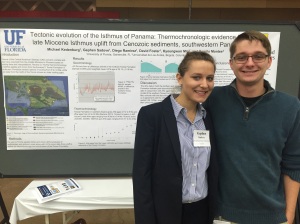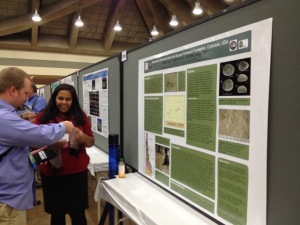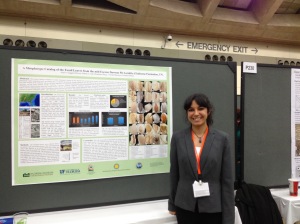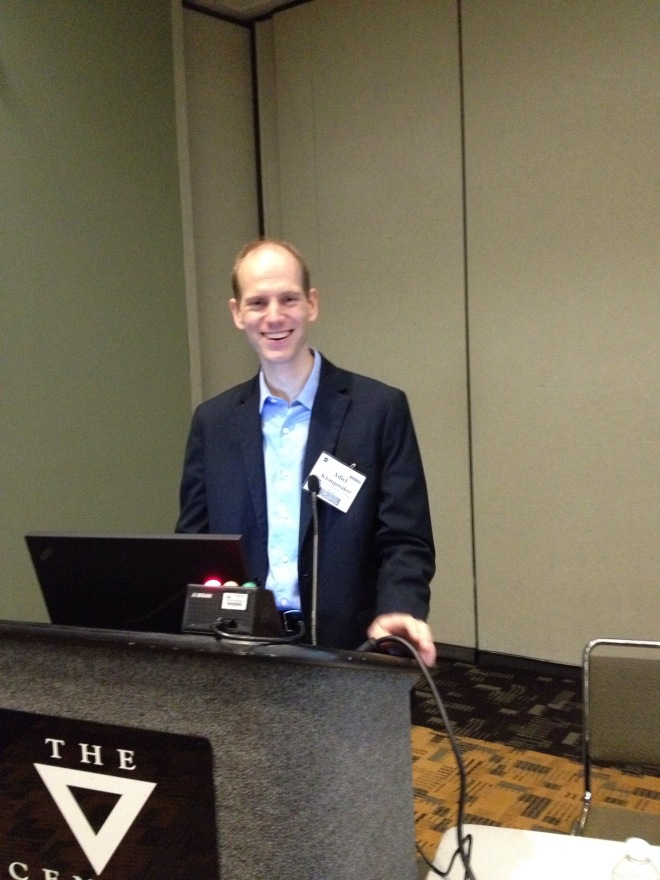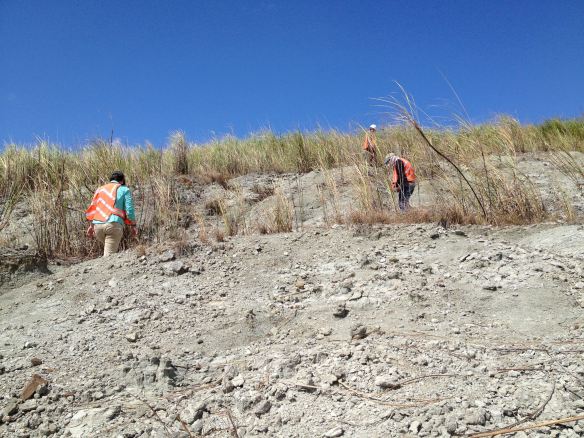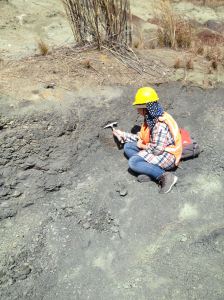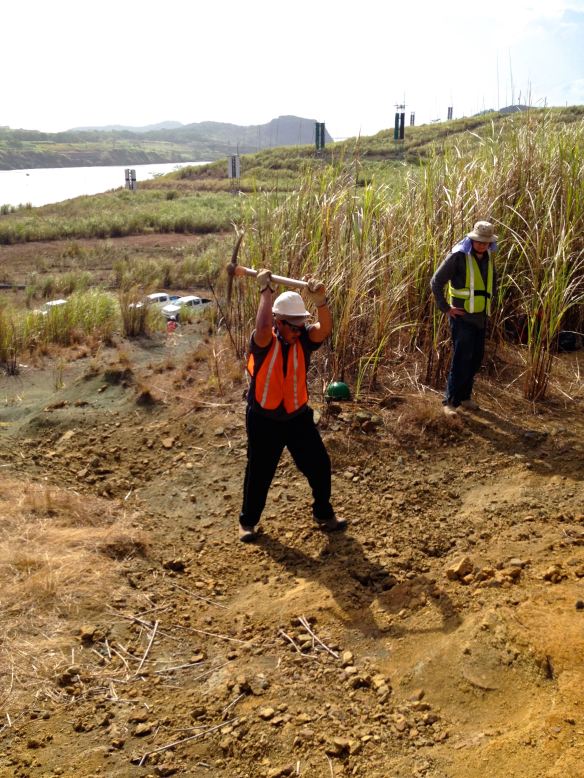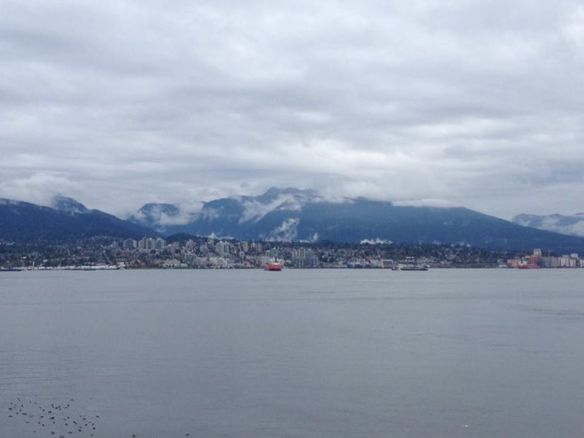Former PCP PIRE geology intern Gephen Sadove and current MS student Mike Kedenburg presented their research on the thermochronology of the Azuero Peninsula of Panama. Gephen and Mike have both written about their research before – Mike wrote about his research here, and Gephen explained about how she worked to process samples for research Part One; Part Two).
Author Archives: Cristina Robins
Dipa Desai at GSA
Current field intern Dipa Desai presented her research from her internship at the Florissant Fossil beds this past summer. She worked with fresh water ostracods. For more about what Dipa is doing now, check out her work at FLMNH here.
Ariel Guggino at GSA
Ariel Guggino presented her work today at the GSA conference in Baltimore, MD. For a behind-the-scenes look at her research, read her blog post here: Tennessee Road Trip.
GSA day 2 preview
Our paleobotanical researchers are in the spotlight today, with posters anchored by postdoctoral researcher Nathan Jud and former museum intern Ariel Guggino. Stop by the poster hall this afternoon to check out their work!
GSA 2015
PCP PIRE has a large contingent here at GSA in Baltimore, MD this year. We hit the ground running with numerous poster presentations and oral presentations.

Former PCP PIRE intern Michael Ziegler presents research from the Azuero Peninsula of Panama that he did in concert with Amanda Waite.

Cristina Robins, Roger Portell, and Javier Luque with their poster on fossil crabs-teasing out characteristics of sexual dimorphism and ontogeny.
Gephen Sadove and Mike Kedenburg presented their research on the geochron of the Azuero Peninsula (see previous post). Great first day at GSA!
Gatún and Empire with the Invertebrate Crew
This trip to Panama has been a little different than normal – we have a group predominantly composed of invertebrate paleontologists and paleobotanists, but have few vertebrate paleontologists. Where do you go in Panama if you want to find invertebrate fossils? Well, you can’t go wrong with the Gatún Formation, which has enchanted malacologists (mollusc-workers) for over a century.

Panoramic photo of the San Judas locality, near the town of Sabanitas in Panama. Photo by C. Robins.
We headed to Gatún on Thursday. It was an incredibly muddy day, with thunder often rumbling in the background, but we were lucky to have a wonderful collecting day. We ended up with over 1,000 invertebrate fossils; mostly molluscs, but with a few decapods, too.
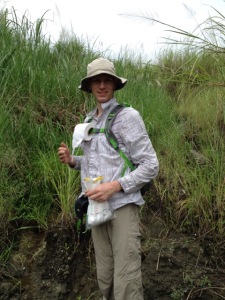
Post doc Adiël Klompmaker keeps his paleo-paper easily accessible for fossil-wrapping. Photo by C. Robins.
We tried out multiple localities within the Sabanitas area, but found many had become overgrown and inaccessible in the last few years. This is a constant issue in Panama, where the erosion rate is high and the plants are constantly reclaiming the open space.
We have Prof. Jon Hendricks with us on this trip. He is a specialist in cone shells, and has been working on their phylogeny. He uses UV light to see their color patterns, which have long-since vanished from our visible color palette. We managed to collect around 500 cone snails for him, which was about half of the day’s total haul! (That’s not a true representative of Gatún diversity.)
After a productive day in Gatún, today we stayed in the canal zone. We were able to access the Empire Locality, a locality full of decapods that had previously been within the construction zone, and thus inaccessible to collecting.
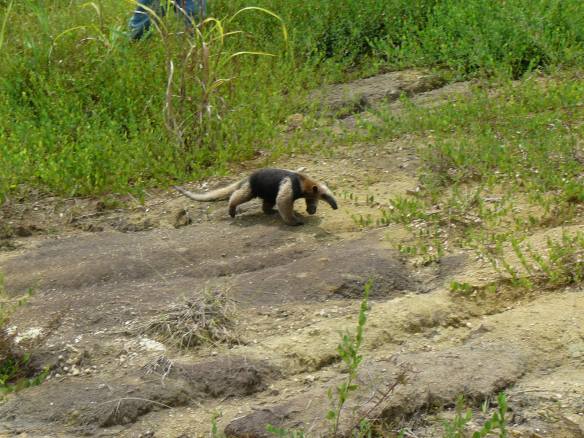
An anteater even tried to help us find fossils. He quickly headed back into the vegetation. Photo by Adiël Klompmaker.
Friday proved to be an incredibly hot day, and we almost welcomed the torrential downpour that arrived around 1PM. The excessive lightning, however, forced us in for an early end. Tomorrow (Saturday) is our final field day, which we will spend as a divided group – part of the group will hunt for crabs, and the museum interns will finally get a chance to test their vertebrate paleontology skills at a few canal sites!
Spring Break in Panama
This week 15 additional people descended on the Panama Canal – the University of Florida Spring Break crew has arrived. For the majority of participants, this is their first experience in Panama. We arrived Saturday afternoon and took Sunday as a tourist day to see the sights – the canopy crane and Punta Culebra were both great activities.
Monday morning brought us to the Panama Canal. We depart our hotel at 7AM, get to the canal around 8:30, and work until 3:30. Quite a few fossils have been found – lots of new vertebrate, invertebrate, and paleobotanical samples are filling the lab at STRI!
NSF Post-doc Amanda Waite at AGU
Currently Amanda Waite (featured in the September eNewsletter) as well as several other PCP PIRE affiliates are at the American Geophysical Union Annual Meeting in San Francisco. Amanda is live-tweeting the event, so be sure to follow here on Twitter: @amandajwaite
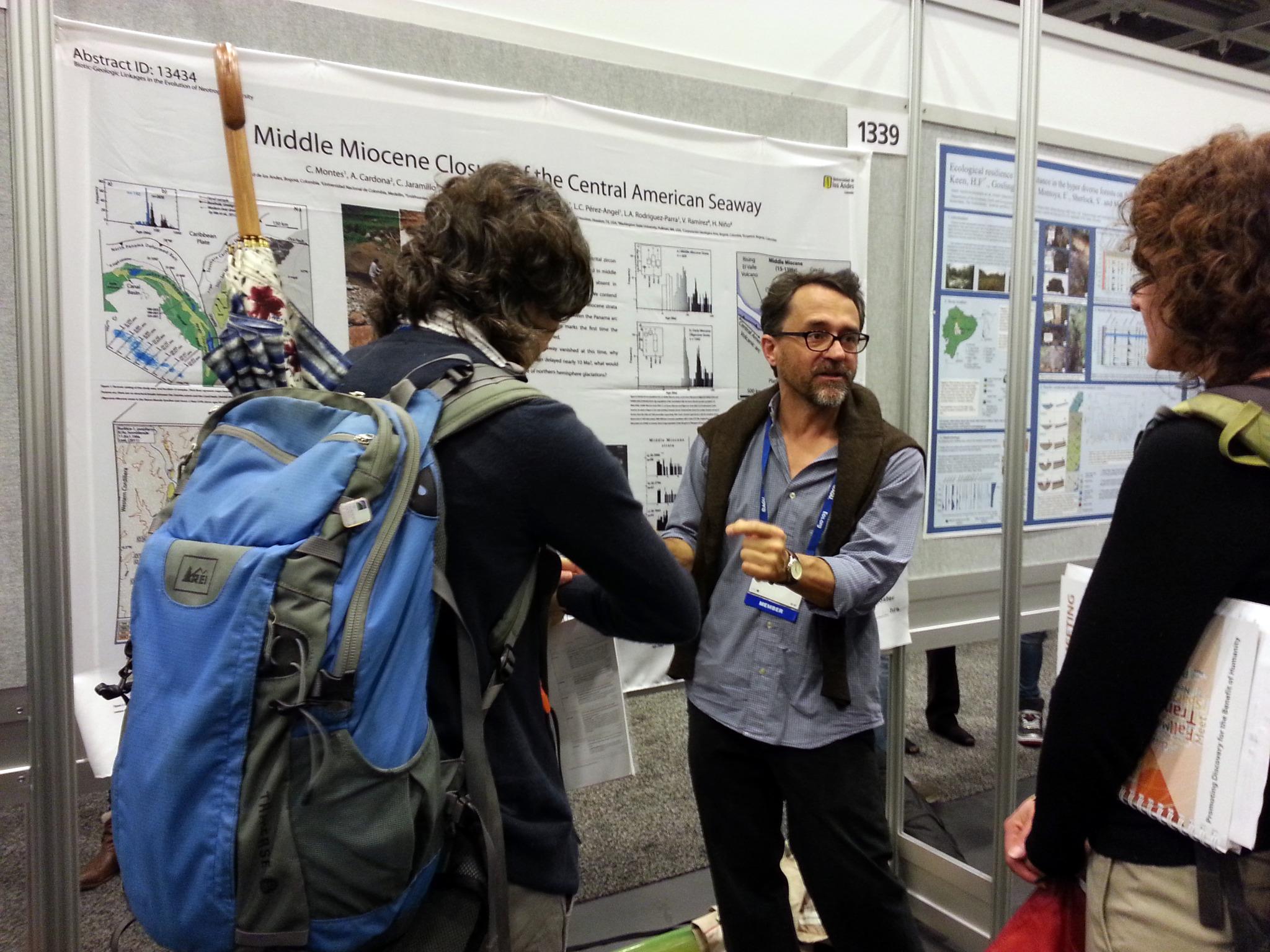
Great #Panama discussion at #AGU14 PP poster session. Reuniting members of @PCPPIRE team from Colombia, France & US!! pic.twitter.com/tIXr9mz7Gq
— Amanda Waite (@amandajwaite) December 15, 2014
Sean Moran in Santa Cruz, CA
Sean Moran recently traveled to Santa Cruz, CA to work with high school teachers developing lesson plans incorporating paleontology. Read his post on GABI-RET’s blog!

Sean Moran shows off a geological sample taken at Capitola Beach. Photo by Rob Hoffman.
The 3-5 Ma (Pliocene) Purisima Formation, a marine sedimentary unit that is fossiliferous and interpreted to preserve marine shelf deposits, crops out at Capitola Beach as well as several other locations around Santa Cruz. The fact that it is close to many local schools and provides material for several type of geology lessons makes in an appealing place for class field trips. The hope is that these trips with teachers will catalyze the creation of lesson plans centered on Capitola Beach [read more on GABI-RET].

